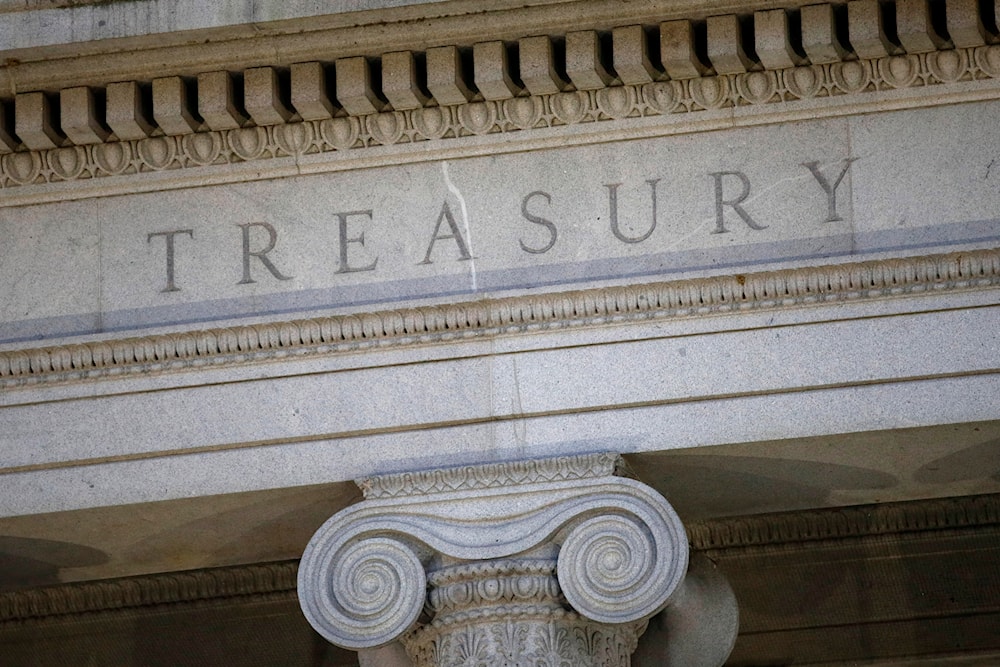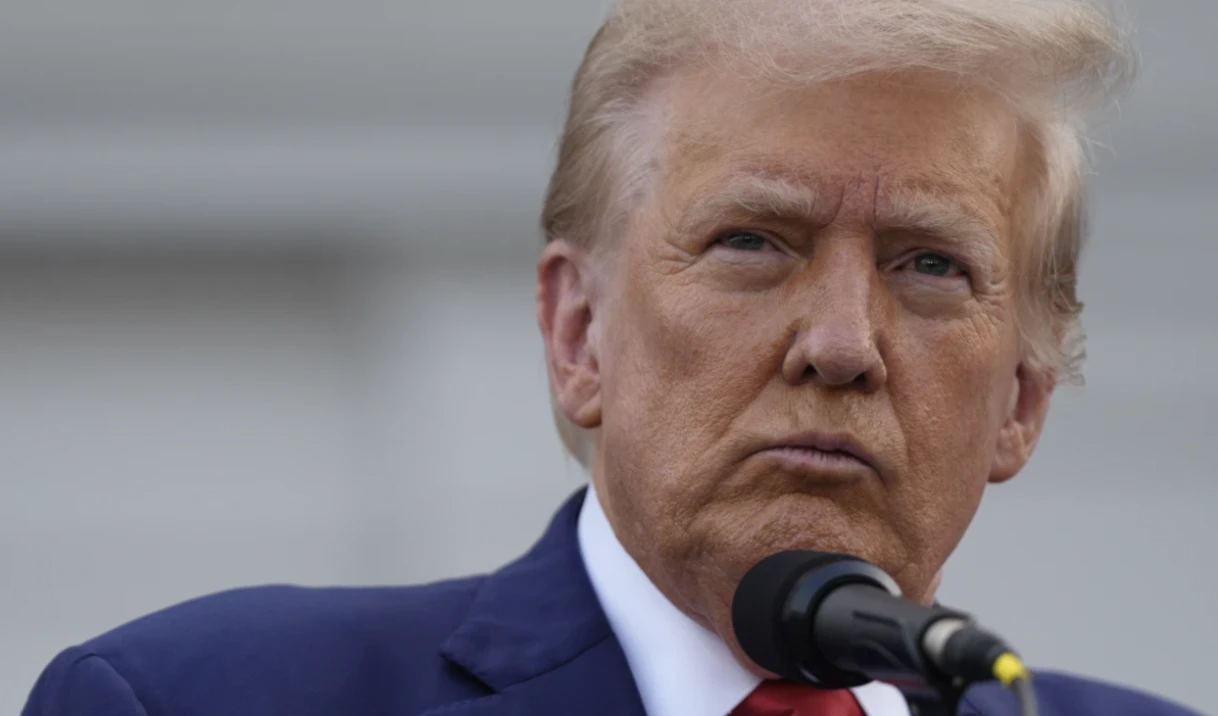US treasury yields hit 5% as deficit fears mount
Bond yields jumped and stock futures fell after Moody’s downgraded the US' credit rating, sparking renewed fears over fiscal stability and national debt.
-

This photo shows the US Treasury Department building at dusk in Washington, June 6, 2019. (AP)
Yields on US Treasury bonds climbed sharply on Monday as markets reacted to renewed fiscal concerns, driven by a combination of credit rating pressures and the progression of a major tax and spending proposal backed by US President Donald Trump.
In Asian trading, yields on 30-year Treasury bonds touched 5%, up 0.06% points, while 10-year yields rose 0.04 points to 4.52%. The rise in yields, which move inversely to bond prices, signals deepening investor unease.
The sell-off extended across asset classes. US stock futures slipped, with S&P 500 and Nasdaq contracts down 1% and 1.3%, respectively. Meanwhile, gold prices rose 0.5% to $3,216 per troy ounce, and the US dollar weakened by 0.3% against a basket of major currencies.
Yields surge, stocks slide, dollar weakens
The sharp uptick in bond yields followed two key developments: the advancement of Trump’s expansive tax legislation through a congressional budget panel, and a credit downgrade from Moody’s.
Late Friday, Moody’s stripped the US of its triple-A rating, citing unsustainable debt levels and growing deficits. On Sunday, Trump’s tax bill, proposing significant tax cuts without offsetting spending reductions, cleared the House Budget Committee after initially being stalled by internal Republican opposition.
“The bill is helping drive up the long end,” said Subadra Rajappa, head of US rates strategy at Societe Generale. While acknowledging that direct causality is difficult to confirm, she noted, “it does seem consistent” with current market behavior.
The bill faced uncertainty after five Republican members of the House Budget Committee opposed it on Friday. But under pressure from Trump, the legislation narrowly advanced over the weekend.
“Republicans MUST UNITE behind, ‘THE ONE, BIG BEAUTIFUL BILL!’” Trump posted on social media. “We don’t need ‘GRANDSTANDERS’ in the Republican Party. STOP TALKING, AND GET IT DONE!”
The bill outlines hundreds of billions of dollars in tax reductions with no accompanying cuts to federal spending. Economists warn that such a fiscal expansion would further widen the deficit, which already stood at 6.4% of GDP in 2024, a level widely considered unsustainable.
Economists warn of rising debt and deficit risks
An expanding deficit requires increased issuance of Treasury securities, which typically depresses bond prices and raises yields. Monday’s market moves reflected this expectation, with investors pulling back in anticipation of further bond supply and the inflationary risks that may accompany the tax cuts.
While the Trump administration maintains that the tax plan will boost economic growth and raise revenues over time, many analysts remain skeptical. The Committee for a Responsible Federal Budget projects the proposal could add up to $5.2 trillion to the national debt over the next decade.
The dual impact of the credit downgrade and the controversial tax plan has renewed broader concerns about the direction of US fiscal policy. For bondholders, rising yields may offer higher returns, but they also signal deepening instability in the government’s financial outlook.
With debt levels rising and political divisions growing sharper over fiscal discipline, investors are watching closely for signs of further market volatility and legislative gridlock in the months ahead.
Read more: Trump signals new US tariffs, warns trading partners of imminent hikes

 3 Min Read
3 Min Read










